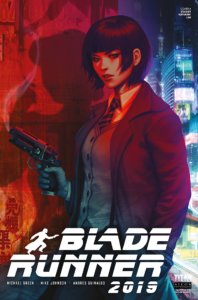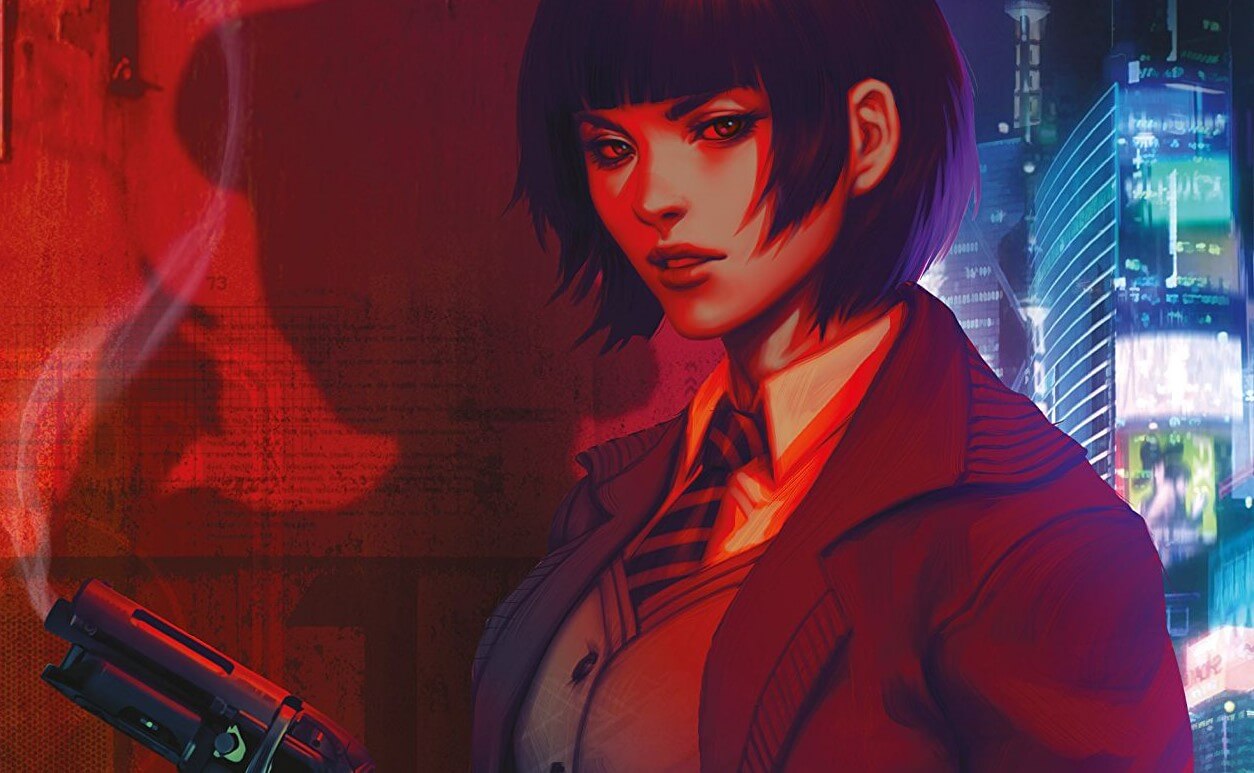Blade Runner 2019 #1
Michael Green and Mike Johnson (writing), Andres Guinaldo (art), Marco Lesko (colors), Jim Campbell (Lettering)
Titan Comics
July 17, 2019
I’ll admit, I wasn’t a huge fan of the story in Blade Runner 2049, but it was a full bodied visual and auditory experience. Director Denis Villeneuve and cinematographer Roger Deakins created a beautiful hazy neon world, a pinker, more digital version of the world built by Ridley Scott and Jordan Cronenweth in 1982.
 Basically, there’s a high bar visually from what I’d want from a Blade Runner comic, and this book is like, 90% of the way there. Marco Lesko’s colors give the book an appropriately gritty feel. The fog rolling through the ground level of LA is less mysterious set dressing and more pollution. And Andres Guinaldo creates visually interesting characters, constrained by tightly and deliberately angled panels.
Basically, there’s a high bar visually from what I’d want from a Blade Runner comic, and this book is like, 90% of the way there. Marco Lesko’s colors give the book an appropriately gritty feel. The fog rolling through the ground level of LA is less mysterious set dressing and more pollution. And Andres Guinaldo creates visually interesting characters, constrained by tightly and deliberately angled panels.
Almost every page has a modular panel layout, with special attention to horizontal panels that span the whole page width, and no panel is redundant. The movement across each page makes each panel a different camera cut. There are no movements that continue from panel to panel, even in fight scenes. The effect is cinematic in one sense and static in another. There’s very little movement happening, and it made at least one critical panel, where lead character Aahna Ashina (aka Ash) cries out in pain, incredibly hard to parse on my first read through. It also leads to a slightly disconnected feeling. There’s little time for a subtle emotion to cross a character’s face (and the only face Guinaldo ever lingers on is that of a replicant, meant to be gruesome and haunting). Blade Runner characters are often flat, however, so I can’t say this technique isn’t appropriate to the source material.
The art certainly maintains the noir atmosphere of the source, as well. But it’s missing that hazy glow that seemed to permeate through 2049 especially (perhaps because this is set before then), and the colors lack a certain dramatic contrast, more muddy than dramatic. The art feels safe in the same way the story of 2049 did. There’s nothing surprising on the page, no unexpected small details building out the universe. It’s just the same mishmash of multilingual neon signs and dark buildings.
The story here, too, doesn’t appear to offer anything fresh. Issue #1 follows Ash, the first Blade Runner of the LAPD and their best, as she’s assigned to find a person rather than a replicant. She’s so good at being a Blade Runner, she’s made herself almost redundant, but her superior still has use for her particular skills. The story follows her as she narrates her way through in the city, hitting up sources and tracking the missing wife of a tech mogul. It’s interesting enough but still well-trod ground for a futuristic dystopia.
However, I thought co-writer Michael Green’s (and Hampton Fancher’s, also a co-writer of the original Blade Runner) screenplay for Blade Runner 2049 fumbled at any attempted class commentary. Here, the enormous wealth disparity of the future is presented front and center. Ash describes herself as “urchin-born,” and she’s dubious of the people inhabiting rich private islands in Santa Barbara, like her client. It’s those lower class origins Ash attributes her ability to cultivate a network of sources to, though we learn that’s not the only leg-up she has on other bounty hunters. But it’s hard to know if this is meant to be commentary on the world of 2019, if there’s anything actually punk hiding in the recognizable aesthetic of cyberpunk.
The most interesting and unexpected parts of the issue, of course, hit at the very end, but they’re not so extraordinary that this new Blade Runner story is in any way vital. Why set this story in 2019, the year of its release? The opening salvo of Blade Runner 2019 is setting up a good enough criminal mystery story, and its look lines up with the world its set in. But it feels shallow, missing even the dynamism of the animated short Blackout 2022, the presumed direct future of this comic. It’s fine enough, but I wish this story felt like it was going to explore the potential of the Blade Runner universe rather than resting comfortably on the familiar.

